Tags
beachcombing, Carrion Crow, common gull, Llanddulas, mallard, Oystercatcher, seashells, strandline, winter
Wednesday last week started out enticingly clear and sunny, perfect weather for a walk on the coast path to blow away the cobwebs. But, despite knowing full well how changeable the weather can be here on the North Wales coast, I dilly-dallied, doing stuff that could easily have waited till later. By the time I was ready to go it had started to cloud over and there was a strong breeze blowing. But it wasn’t raining and from my window I could see sun shining over the far side of Colwyn Bay, so that’s where I decided to head for.
Llanddulas, with an interesting landscape and mix of habitats, is the perfect place to combine meandering-with-intent and if required, a brisk walk along the coast path, despite its bleakness on days like today. As I pulled in to park my car behind the defensive wall of rip-rap, two hopeful gulls landed on the ground close by, one a black-head gull, the other a herring gull. Even here the local gulls have come to associate cars with people with food, especially since lock-down brought more visitors and subsequently more people in camper-vans.
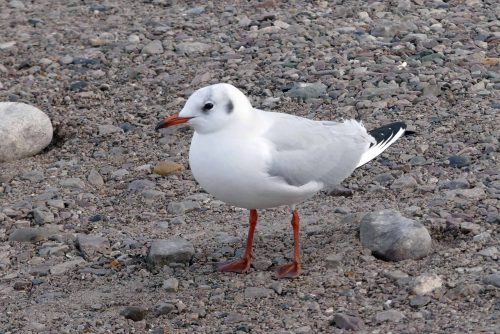
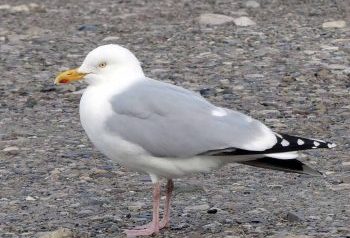
The river (Afon Dulas)
The river’s water level is low at the moment, giving the opportunity for repairs to made to parts of its banks that have been quite badly eroded. The worst affected spots are those where people regularly leave the path to get down to the water; these spots, already weakened have been further damaged at times when the river level has been higher after storms and heavy rainfall.
Looking downriver towards where the river soon meets the sea there are more eroded areas, one spot on the bend reaches very close to the edge of the coast path.
Crossing the bridge, I stopped to watch three mallards that were heading upstream towards me; a female flanked on either side by two males. They seemed to be in no particular hurry, cruising steadily along paddling against the flow of the river, dabbling as they travelled. The water was surprisingly clear, and though it was rippled and textured by the wind, I could see the ducks’ heads as they searched the riverbed. All are looking very handsome in their bright breeding colours and I wondered about there being two males and one female; mallards start to pair up around October or November, so was one male hoping to entice the female away from the other, or was she torn between the two?


The wind was getting stronger and as it was blowing from the north-west, I could feel it pushing me along as I carried on following the course of the river to where it meets the sea. It was invigorating and all cobwebs were quickly dispatched, and I tried not to think about the walk back against a head-on wind.
The Strandline
At its end, the river is guided to its meeting point with the sea by a great man-made wall of piled rocks and it’s behind that the shoreline becomes accessible.
The tide was just on the point of turning, and the wind was pushing some big waves towards the shore where they crashed and left foamy trails as they receded. There is no shelter from the elements anywhere along this exposed section of the coast and today, even the hardy herring gulls, often here in great numbers, were conspicuous by their absence.
When the tide is in there is no visible sand, so it’s not greatly attractive to people, but this rough stony area of the shoreline is always interesting, both in terms of what plants grow here and what the waves may have carried in and left behind them on the strandline.


The strandline here at Llanddulas is almost always interesting and is a good place to find some of the bigger and tougher shells, although many get damaged by the rocks and stones on the lower shore. A lot of twiggy and small pieces of wood get mixed in with the drifts of seaweed too; some is probably driftwood, but as there are trees on the other edge of the path it’s likely that much of it is from there. Sadly, there’s also usually a lot of plastic waste amongst the treasures, endless metres of fine fishing line that gets tangled into seaweed, discarded wipes, plastic bottle tops and spent shotgun cartridges are some of the most frequently found items. I always pick up what I see and today ended up with at least half a bag full of stuff to put into the rubbish bin, but it’s frustrating knowing there’s a lot more out there that really doesn’t need to be.
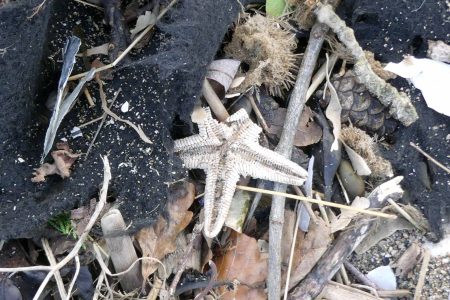
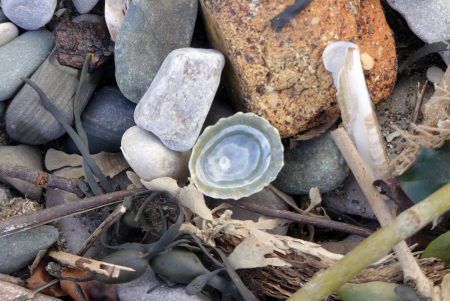
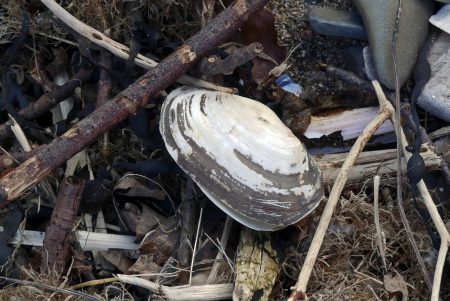
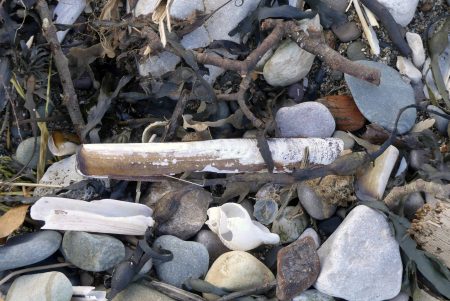
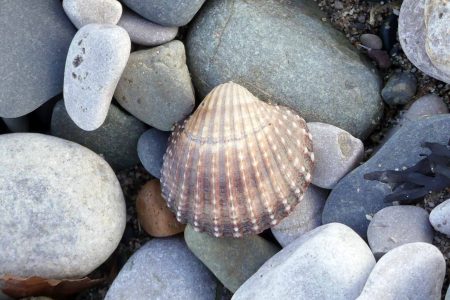
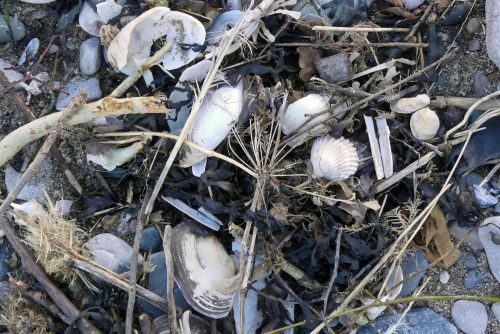
The gulls may have been spending their day elsewhere, but there were several carrion crows about. One flew in and landed close to me on the rise of pebbles on the sea edge, perhaps interested to see if I’d found anything edible as I probed in the piles of seaweed.
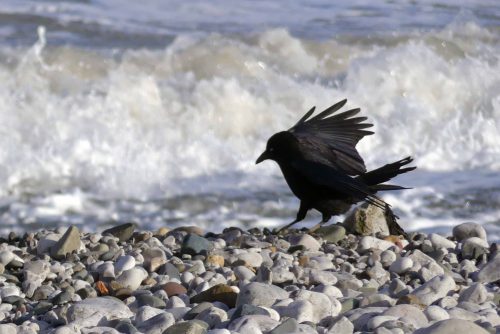
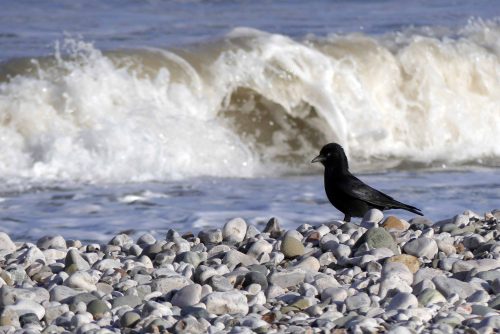
My activity also caught the interest of a free-running dog that came racing over towards me from the path, taking no notice of its owner’s attempts to call it back. It was a cute dog, but I didn’t want its excited company, and more importantly, I’d spotted a line of resting birds along the sea-edge just ahead of me and didn’t want the the dog to catch sight of them too and race over and disturb them, something that happens all too often here. This time I managed to divert it back towards its owners and the birds were left in peace.
Oystercatcher – welsh Pioden y Môr
Oystercatchers seem, happily, to be maintaining good-sized populations along this coast and Welsh estuaries, but that is not the case generally, as highlighted in this recent post by Graham Appleton:
Over recent decades, numbers of Eurasian Oystercatchers have declined. In 2015 the species was reclassified as “Near Threatened” on the IUCN’s Red List (Birdlife International) and “Vulnerable” within Europe. It is also Amber listed on the UK’s Birds of Conservation Concern list, due to its European status, the concentration of its wintering population in protected sites and the international importance of UK breeding and wintering populations.
When Oystercatchers can’t find food
/ GRAHAM APPLETON
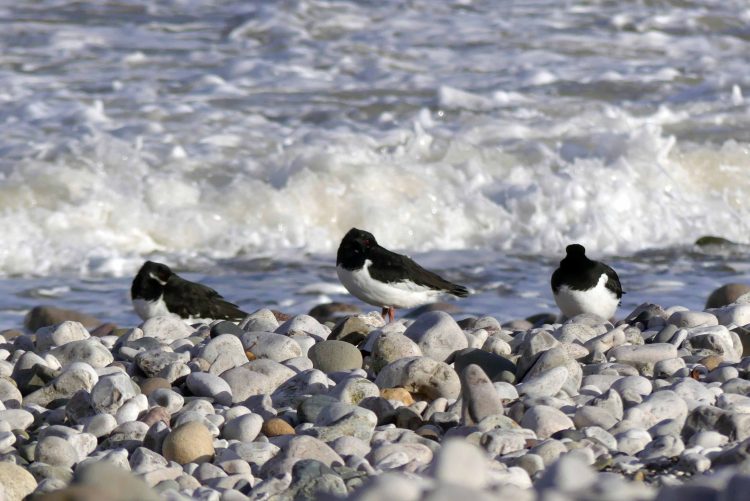

Not shells
Moving on, a bit higher up on the beach there was more to see, including pieces of ‘stuff’ that are found blowing around on beaches practically everywhere and some that I’ve only recently become aware of.
On the left of the photograph, a bundle of the dried empty egg-cases of the common whelk.
On the right is a piece of dried almost fabric-like hornwrack. It looks like a dried piece of seaweed, but is actually a colony of animals, meshed tightly together, each animal contained in a little box. When it’s alive, hornwrack grows only during spring and summer, forming bushy clumps attached to shells, stones, cobbles or rocky seabeds and is a pale beige colour.
I first came across a piece of the stuff in this photograph on New Year’s Day whilst out collecting shells with my little granddaughters on Rhos on Sea beach. There was a lot of there and I was intrigued by it, although they both said it was ‘disgusting’! It does look a bit odd, I admit and it feels strange, very light and a bit corky or spongy. It turns out that it is commonly known as dead man’s fingers, which in its life is a soft coral whose scientific name is Alcyonium digitatum, which also references fingers, an indication of how it grows.
It was interesting to find it here too and others have found it on beaches further along the coast, so I wonder if it all originated in the same place, brought in by a recent storm and carried on currents to be washed up in various places?
On a calmer day I might have lingered here longer, but my hands were getting cold and I can’t operate a camera with gloves on. I took them off again to photograph this surprising sight ; the new green leaves of a yellow horned-poppy plant, then headed back over to join the coast path.
Back on the path I deposited my rubbish collection in a bin in front of the café/bar next to the caravan site and carried on, still blown from behind by the wind. This stretch of path towards Pensarn is edged on the sea side by a narrow strip of ground which in the spring and summer months becomes a colourful border full of wildflowers.
Presently, it is largely covered by grass and spiked with tall dried stalks, the remains of last year’s flower stems, but already the bright green leaves of Alexanders are growing strongly.
Watching the sea crashing in against the fortified shore brings home just how powerful it is and how vulnerable to its effects the land is.
In the near distance I could see a few gulls flying around the posts of one of the groynes and although tempted to turn around here, I wondered why they were here when all others were elsewhere. As I got nearer I was more mystified; the gulls were perching on the tops of posts and flying up just as each big wave broke behind them, momentarily covering the post. It was entertaining to watch, almost as though they were playing a game of ‘chicken’ – seeing who could stay the longest before being hit by the rising water.
I couldn’t get close enough to the birds for a really good look, even with a zoom lens, but at least two were definitely common gulls, which we don’t get to see many of; in fact here is the only place I have seen them for myself. These gulls are slightly bigger than a black-headed gull but much smaller than a herring gull. The common gull also has greeny-yellow legs rather than the red of the black-headed gull and the pink ones of a herring gull. The best photograph I managed was of one flying, which shows its bill, finer and more pointed than that of a herring gull and the larger ‘mirrors’ on its wingtips.
My original plan had been to carry on walking to Pensarn beach, but the thought of walking back against the cold and increasingly strong wind from even further away took away my enthusiasm for that and I headed back. As suspected, it was indeed a bracing walk back and I stopped only once for long enough to take a photograph of the view in the direction I was now walking in. I think I’d be a bit concerned if I had one of those mobile homes close to the shore edge.
Note to self: don’t park your car this close to the sea wall on windy days- salt spray is not good for it!

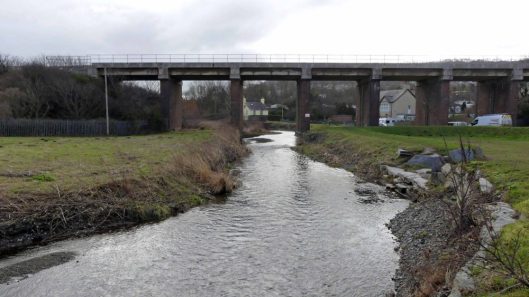
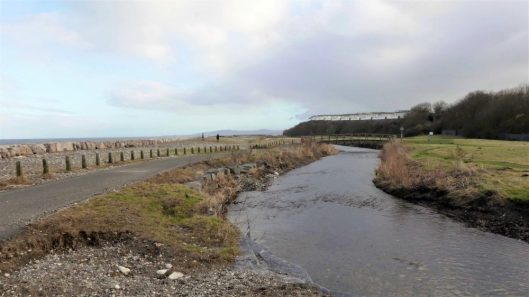

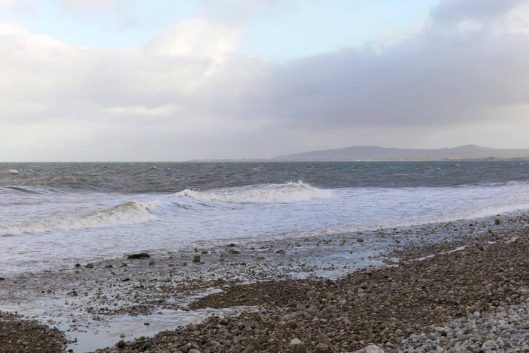

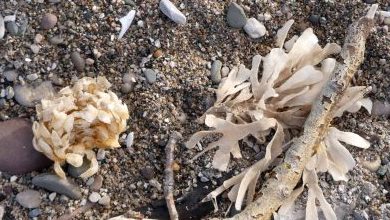
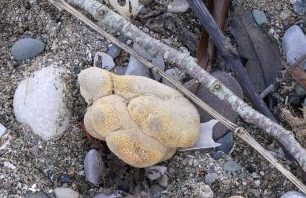
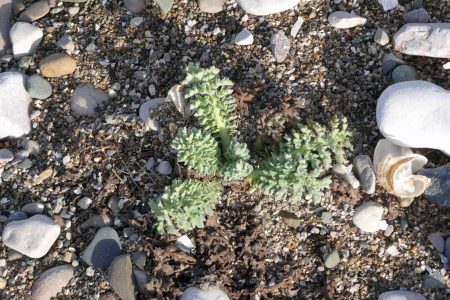



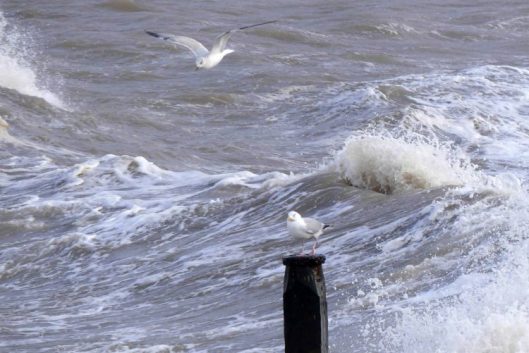
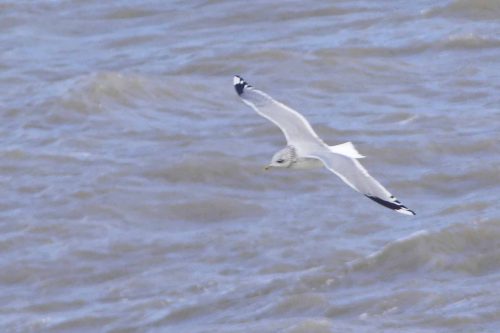
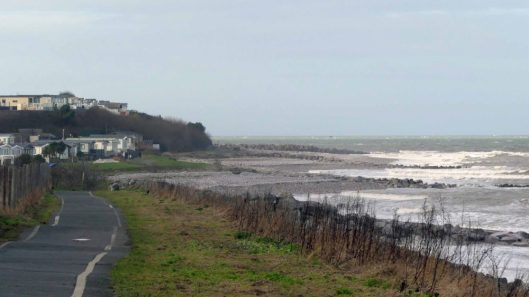
Such a wonderful post as always, oops on the car parking though!
LikeLiked by 1 person
Thanks Becky, yes, poor car – not great for cameras either!
LikeLiked by 1 person
Fabulous walk and great pictures! I thoroughly enjoy your descriptions and I always learn lots.
We’ve just come home from a couple of days in Hereford and the Wye was low there too. We watched a couple of grebes sailing upstream which was rather lovely. Best wishes Anny x
LikeLiked by 1 person
Thank you Anny, that walk was definitely high on the list of windiest and wildest I’ve done for a good while! Hereford looks like a lovely place – I’ve only been through it on the train when I’ve travelled from up here down south to Bristol. Lack of rainfall seems quite general so far this year, I think the persistent strong winds must be blowing it all away! Lucky you to have grebes ti watch, such graceful birds!
LikeLike